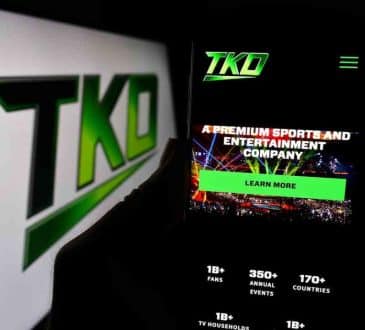3 Moves to Make to Showcase Your Company’s Environmental Stewardship

The push toward going green is no fleeting trend for companies. Besides environmental stewardship being the right thing to do for our planet, consumers also indicate that it makes a difference in their brand preferences. How can green hopefuls best showcase their eco-friendly efforts, then?
The race has begun. And if your business isn’t an active participant, everyone in your organization will be on the wrong side of the finish line.
I’m talking about the race to protect the environment, of course.
As of February 2021, nearly two dozen companies — including big players such as Amazon and IBM — have put their weight behind The Climate Pledge. Participants in The Climate Pledge have promised to reduce their greenhouse gas emissions to net-zero by 2040. A lofty goal? Perhaps. However, it’s necessary for a variety of reasons.
Foremost, a focus on sustainability is good for business. This year, for example, IBM released fascinating findings on consumer preferences when it comes to sustainable shopping, working, traveling, and more. The survey showed that more than half of buyers would pay more for companies that are environmentally responsible and sustainable. That means organizations don’t necessarily need to trim margins in order to bring more eco-friendly choices to the market. More and more people are buying based on their values, not price.
What’s another reason to make sustainability a priority? Going green can help reduce the high cost of employee turnover. Case in point: The same IBM report indicated that more than two-thirds of working professionals would actively source and accept jobs at brands that received high marks for environmentalism. What’s more, almost 50% of respondents said they would take lower pay to work for organizations that are environmentally responsible.
Quite literally, it pays to be sustainable. And I know this from personal experience.
More Than Just Green Gestures
I’m not surprised by this passionate brand movement toward being more thoughtful about our environmental impact. After all, the push toward going green has been happening for years. In fact, my company, Jelmar, was working on designing safer cleaning solutions 20 years ago.
It all started with our CLR cleaning product formulations. Jelmar’s lead chemist believed that “greener” and “cleaner” could be synonymous. As a result, she worked hard to change our formulations to be environmentally safe. We never talked about those changes to consumers. We just kept selling our greener products — and people kept buying them because they worked.
Then, the Environmental Protection Agency’s Safer Choice label came along to show which products were better for the environment. We became the first company to highlight that logo on our product packaging, and we eventually received a handful of EPA Safer Choice Partner of the Year Awards for our approaches to environmentally safe solutions. Each year, we audit our sustainable initiatives so we can improve and build upon our current practices and further reduce our environmental impact.
What we’ve done in the name of sustainability isn’t novel anymore. Many brands are trying to be better by “doing good” from an eco-friendly standpoint. Nevertheless, I know it can take time (and a lot of patience) to figure out how to make environmental stewardship work for your company.
If you’re trying to move into a more environmentally ethical and sustainable direction but aren’t sure where to begin, try these strategies:
- Put yourself on the same side of the table as your customers.
Before I became a mom, I thought I understood what our customers wanted in terms of healthier home cleaning products. I was right — to a point. But when I became a parent and put myself in the shoes of our consumers, I gained a much deeper connection to what buyers expected and needed.My experience highlights how important it can be to collect real-world data on your target personas. Are your fans interested in buying from brands that make use of solar power or wind turbines? Are they actively seeking to purchase from companies that “walk the walk” in terms of only working with eco-conscious vendors? The more you know about your audiences’ sustainability preferences, the easier it will be to figure out what your company needs to do next.
- Get creative when it comes to sustainability.
“We’ve done all we can do.” Every company has said this, but it just isn’t true. Once again, our own brand story shows the truth. If you had asked us in the ’80s if we thought an organic cleaning product could work as well as one with lab-created chemicals, we would have scoffed. Yet within a couple of decades, we understood that with a little innovation and a better understanding of chemistry, we could offer customers the best of all worlds.It can be hard to think differently about your company’s processes, operations, supply chains, and products. That’s where brainstorming sessions can come in handy. Gather your brightest minds (and make sure they come from diverse backgrounds and experiences) to mull over all the green “what ifs.” You’ll probably discover plenty of ways your company can operate more sustainably. Hey, even Nike has found ways to construct eco-friendlier shoes — a feat no one saw coming.
- Adopt a “humblebrag” mentality around your corporate environmentalism.
Consumers are actively looking for brands that align with their values, and they’re becoming surprisingly agnostic in terms of old loyalties. Double down on your marketing and advertising efforts to show consumers what you’re doing to help the planet. This might seem a little boastful, but it’s not — it’s transparent.Write a blog about your company’s water usage, and perhaps showcase the data indicating how it’s gone down month after month. Upload a social media video outlining your corporate policies regarding recycling. Showcase employees who bike to work or commute together to reduce their climate impact. “Bragging” about your initiatives helps current customers feel good about their choices and encourages prospective customers to support your brand.
Whether you know it or not, consumers and other stakeholders are scrutinizing your company’s environmental moves. They’re evaluating you on the decisions you make and your overall impact. Help them see your organization in the best possible light by putting climate pledges before fast profits.
Written by Alison Gutterman.
Add CEOWORLD magazine to your Google News feed.
Follow CEOWORLD magazine headlines on: Google News, LinkedIn, Twitter, and Facebook.
This report/news/ranking/statistics has been prepared only for general guidance on matters of interest and does not constitute professional advice. You should not act upon the information contained in this publication without obtaining specific professional advice. No representation or warranty (express or implied) is given as to the accuracy or completeness of the information contained in this publication, and, to the extent permitted by law, CEOWORLD magazine does not accept or assume any liability, responsibility or duty of care for any consequences of you or anyone else acting, or refraining to act, in reliance on the information contained in this publication or for any decision based on it.
Copyright 2024 The CEOWORLD magazine. All rights reserved. This material (and any extract from it) must not be copied, redistributed or placed on any website, without CEOWORLD magazine' prior written consent. For media queries, please contact: info@ceoworld.biz
SUBSCRIBE NEWSLETTER








